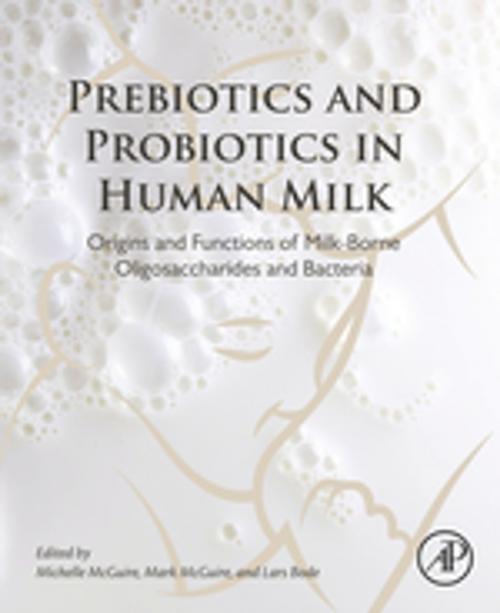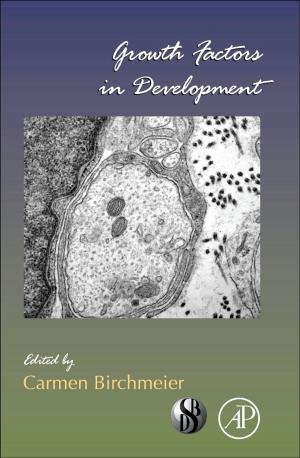Prebiotics and Probiotics in Human Milk
Origins and Functions of Milk-Borne Oligosaccharides and Bacteria
Nonfiction, Science & Nature, Technology, Food Industry & Science, Health & Well Being, Health, Nutrition & Diet, Nutrition| Author: | ISBN: | 9780128027462 | |
| Publisher: | Elsevier Science | Publication: | October 6, 2016 |
| Imprint: | Academic Press | Language: | English |
| Author: | |
| ISBN: | 9780128027462 |
| Publisher: | Elsevier Science |
| Publication: | October 6, 2016 |
| Imprint: | Academic Press |
| Language: | English |
Prebiotics and Probiotics in Human Milk: Origins and Functions of Milk-Borne Oligosaccharides and Bacteria provides a comprehensive, yet approachable, treatise on what is currently known about the origins and functions of human milk oligosaccharides (HMO), the complex sugars in milk that are not digested by the infant.
The book examines how HMOs and bacteria in human milk may function independently and coordinately to influence both maternal and infant health. Human milk is the only food “designed specifically to nourish humans, indeed representing the essence of a perfect “functional food. And although researchers have been studying its composition for decades, surprisingly little is really understood about the origins and functions of its myriad components, an area that is especially true for HMOs and bacteria.
This book provides a thorough review of the newest research on these inter-related milk constituents as written by a team of experts from both academia and industry who actively conduct HMO and human milk microbiome research as they endeavor to apply this new knowledge to infant nutrition. Each chapter provides objective rationale for what research is still needed in this rapidly evolving area, also discussing the challenges and opportunities faced by the industry in adding HMO and microbes to infant food products.
This book is a valuable resource for nutrition researchers focused on infant nutrition, food scientists and product developers working on infant formula, and clinicians interested in broadening their understanding of the benefits of human milk for infants.
- Presents a reader-friendly, highly-curated text that includes a review of the literature related to origins, variability, metabolism, and functions of HMO and human milk bacteria
- Discusses the potential implications of HMO and milk microbiota to industry – for instance, utilization in the dairy industry and infant formula
- Consists of learning aids, such as pull quotes, critical summary statements, and an extensive list of published literature throughout
Prebiotics and Probiotics in Human Milk: Origins and Functions of Milk-Borne Oligosaccharides and Bacteria provides a comprehensive, yet approachable, treatise on what is currently known about the origins and functions of human milk oligosaccharides (HMO), the complex sugars in milk that are not digested by the infant.
The book examines how HMOs and bacteria in human milk may function independently and coordinately to influence both maternal and infant health. Human milk is the only food “designed specifically to nourish humans, indeed representing the essence of a perfect “functional food. And although researchers have been studying its composition for decades, surprisingly little is really understood about the origins and functions of its myriad components, an area that is especially true for HMOs and bacteria.
This book provides a thorough review of the newest research on these inter-related milk constituents as written by a team of experts from both academia and industry who actively conduct HMO and human milk microbiome research as they endeavor to apply this new knowledge to infant nutrition. Each chapter provides objective rationale for what research is still needed in this rapidly evolving area, also discussing the challenges and opportunities faced by the industry in adding HMO and microbes to infant food products.
This book is a valuable resource for nutrition researchers focused on infant nutrition, food scientists and product developers working on infant formula, and clinicians interested in broadening their understanding of the benefits of human milk for infants.
- Presents a reader-friendly, highly-curated text that includes a review of the literature related to origins, variability, metabolism, and functions of HMO and human milk bacteria
- Discusses the potential implications of HMO and milk microbiota to industry – for instance, utilization in the dairy industry and infant formula
- Consists of learning aids, such as pull quotes, critical summary statements, and an extensive list of published literature throughout















